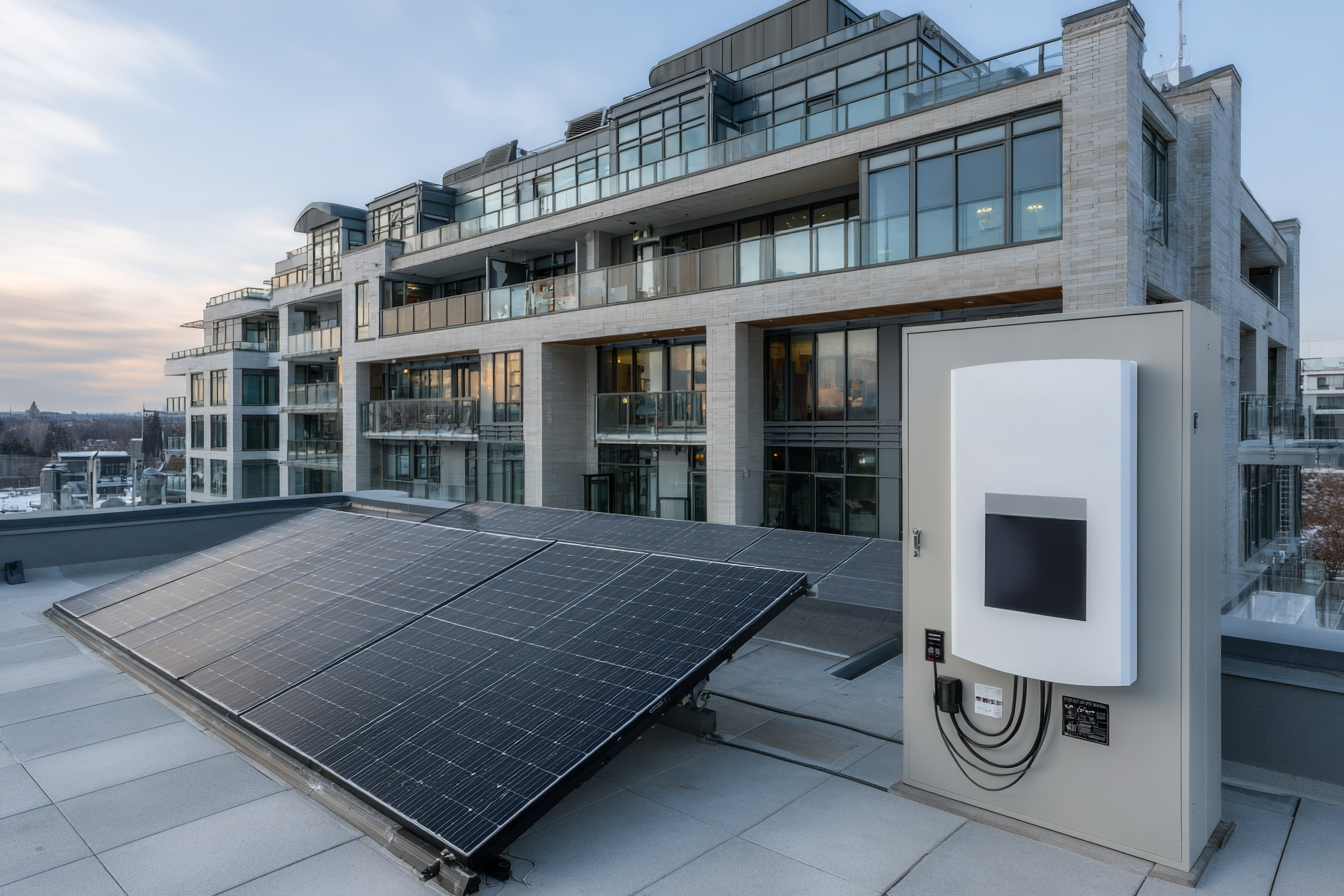What Does kWp Mean? A Simple Explanation of Solar System Size for Canadian Homeowners

Written by Solenery
3 min read
What Does kWp Mean is often the first question homeowners face when thinking about going solar. One of the first terms you’ll run into is kWp, short for kilowatt-peak. It’s used in solar quotes, incentive programs, and system sizing across Canada.
But what does kWp actually mean, and why does it matter for your home? In this article, we’ll break down the meaning of kWp in plain English, show you how it connects to real-world electricity production, and explain how to use it when comparing solar options, rebates, and payback timelines.
Whether you live in Vancouver, Calgary, Toronto, or Halifax, understanding this one term can help you make smarter solar decisions.
What does kWp mean and How Is It Different from kWh?
kWp stands for kilowatt-peak, the maximum output your solar system can produce under ideal test conditions.
It’s a measure of system capacity, not how much energy you’ll actually get day to day.
Think of it like a car’s horsepower. Just because your car has 250 HP doesn’t mean it’s always running at full speed same with solar.
Example: A 5 kWp solar system = a system capable of producing 5 kilowatts at peak performance, typically around noon on a sunny day with ideal sunlight.
Quick Facts about kWp:
- Definition: Maximum system capacity under standard test conditions.
- Unit: kilowatt-peak (kWp).
- Difference from kWh: kWp measures capacity, kWh measures actual energy produced.
- Relevance: Used in pricing, sizing, and incentives for solar systems.
Real-World Factors Affecting kWp
Real-life performance will always differ from theoretical kWp ratings because of:
- Dirt, snow, and shading: Panels rarely operate at full capacity all day.
- Inverter and wiring losses: Typically 10–15%.
- Panel degradation: Around 0.5% per year.
- Seasonal changes: Solar yield varies by season and weather.
For example, a 5 kWp system in Alberta may produce ~6–7% more annual energy than in Quebec due to better solar yield.
Read more: How to Choose the Best CRM for Solar Business in Canada
Why Does kWp Matter for Canadian Homeowners?
Here’s why understanding kWp matters:
It’s how systems are priced and sized. Solar quotes are usually “$/Watt,” meaning a 6 kWp system priced at $2.50/Watt = $15,000.
It determines rebate eligibility. Many incentives base funding on system size.
It gives you a rough sense of energy output — especially when paired with your province’s solar yield.
| Province | Avg. Solar Yield (kWh/kWp/year) |
|---|---|
| Alberta | 1,300–1,400 |
| Ontario | 1,100–1,300 |
| BC Interior | 1,200–1,300 |
| Quebec | 1,000–1,150 |
| Nova Scotia | 1,100–1,200 |
So:
A 6 kWp system in Alberta may produce ~8,000 kWh/year.
The same system in Quebec may produce ~6,600 kWh/year.
How to Calculate Your kWp?
Calculating your kWp is a simple process and helps you estimate the right system size for your home.
Step-by-step calculation:
Find your annual electricity use (from your hydro bill — typically 8,000–12,000 kWh/year).
Divide by your province’s solar yield (kWh/kWp/year).
Example:
Annual usage: 9,000 kWh/year
Province: Ontario (solar yield: 1,200 kWh/kWp/year)
Required size: 9,000 ÷ 1,200 = 7.5 kWp system
Panel calculation:
If each panel is 400W (0.4 kWp):
7.5 ÷ 0.4 = ~19 panels
To better understand how your system size affects your financial return, check out our step-by-step guide on building your own Solar ROI calculator.
What Size of Solar System Do I Need for a Typical Canadian Home?
The number of panels depends on their wattage and your energy use.
Here’s a step-by-step guide:
Check your annual electricity use. (Found on your hydro bill — typically 8,000–12,000 kWh/year)
Divide by your province’s solar yield.
Choose a system size based on your goals — 100% offset, or partial?
Example:
You use 9,000 kWh/year
You live in Ontario (solar yield: 1,200 kWh/kWp/year)
Required size: 9,000 ÷ 1,200 = 7.5 kWp system
If each panel is 400W (0.4 kWp), then:
7.5 ÷ 0.4 = ~19 panels
Understanding Solar System Losses: Dirt, Shade, and Efficiency
Real-world conditions mean your system never operates at 100% of its kWp rating:
Dirt and snow on panels
Shade from trees, chimneys, or neighbouring buildings
Inverter and wiring losses (~10–15%)
Panel degradation over time (about 0.5%/year)
So your actual energy production (in kWh) will always be lower than your theoretical max based on kWp.
Good installers in Canada account for this in their performance estimates.
How Does kWp Affect Rebates and ROI?
Most rebates and loans are based on system size (kWp). For example:
Greener Homes Loan: Up to $40,000 interest-free for upgrades, including solar
Municipal programs like Edmonton’s Solar Rebate or Calgary’s Residential Solar Program also use system size in their eligibility calculations.
Higher kWp = higher upfront cost, but also more savings and more credits through net metering.
Tip: Pairing your kWp knowledge with your home’s annual usage and rebate potential gives you the best bang for your buck.
Conclusion
What does kWp mean? Understanding kWp is one of the simplest ways to decode your solar quote, evaluate system size, and estimate real-world savings.
Think of it as your solar system’s horsepower, the higher the kWp, the more energy potential you unlock (especially in sunny provinces like Alberta or southern Ontario).
Want help finding your ideal system size and seeing what rebates you qualify for?
FAQ
kWp stands for kilowatt-peak, the maximum power output a solar system can produce under ideal conditions.
No. kWp is capacity (power), while kWh measures actual energy produced over time.
Divide your annual electricity usage (kWh) by your location’s average solar yield (kWh/kWp/year).
It determines system size, cost, rebate eligibility, and estimated energy output.
No, kWp depends on the total panel capacity, so adding panels or upgrading to higher-wattage panels is required.